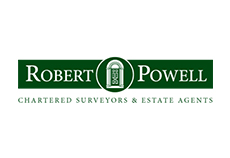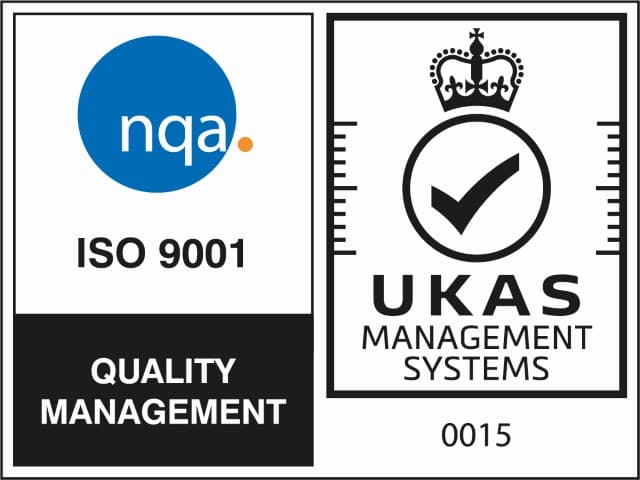Fire Safety
General
Loss of life and property damage due to fire is a serious problem in residential property. Around 500 people die each year from these fires. 70% of these are trapped by fire and smoke before they have time to escape. Each year over 11,000 people are injured by fires.
Statistics show that elderly or disabled people are more likely to suffer injury due to their restricted mobility in the event of fire. Young children are similarly vulnerable.
Matches and cigarette lighters should be kept out of reach of children, who should be made aware of the danger of fire and the effects of smoke inhalation. Where appropriate you should discuss a fire escape plan with them.
The use of candles and supplementary lighting causes many fires. You should avoid naked flames in bedrooms and never smoke in bed. Nightwear and bedding should be of fire retardant material.
Many accidental fires occur in kitchens or utility rooms. These rooms are often compartmented. Fires in hallways or on landings are potentially more serious as these are normally escape routes to safety. You should avoid the use of portable heaters in the hallway and ensure that stairs and halls are kept free of stored articles.
Inflammable liquids should be stored in a cool, safe place (out of sunlight), in clearly labelled containers.
You should not have bonfires close to buildings, refuse receptacles, sheds, boundary fences, trees, shrubs, etc.
Appliances
Many fires are caused by damaged or defective appliances or where appliances have been left unattended.
Where gas and electric heaters and appliances are included in the sale their age, safety and serviceability should be verified by an appropriately qualified contractor prior to use.
Appliances should be correctly and regularly maintained and used. Ideally they should never be left in operation at night or whilst you are sleeping.
Fires can be caused by faults both in electrical appliances or in the wiring supply to them. The electrical system and wiring should ideally be tested by a suitably qualified electrical contractor prior to use to ensure that no dangerous or non-confirming adaptations are in existence and to ensure that the systems and fittings are properly earthed. Any adaptations should be undertaken by a qualified electrician and fuses in plugs should be of the correct rating.
Electric blankets should not be connected to multi adapters to reduce the risk of accident. Such fittings should be checked regularly and replaced if impact damaged or worn.
Kitchen
It is estimated that two thirds of domestic cooking fires occur on electric cookers.
You should always double check that cookers are switched off when not in use. If you have a gas cooker ensure that controls are fully turned off before leaving the appliance.
Chip pans should never be left unattended. Each year these fires cause 5,000 injuries.
Fire Control Products
Ideally a proper fire blanket, suitable for putting out a chip pan, waste bin, cooker top and clothing fires should be kept in the kitchen.
Kitchen fire extinguishers are easy to use and may be suitable for putting out small oil, grease or material fires at an early stage. Only Carbon Dioxide type fire extinguishers should be used on live electrical equipment or liquid fires.
Open Fires & Heaters
A suitable fireguard should always be available not only for open fires but for other fires and heaters in the home where there are young children.
The appropriate fuel should always be used.
Clothing, newspapers, or other inflammable materials should never be placed near to or laid on top of fireguards or heaters. Do not place a clotheshorse near a fire or the cooker.
Chimneys should be swept prior to use and regularly thereafter. Flues should ideally be lined to prevent the escape of the flue gases heat and smoke. Flues to boilers or water heaters should be kept free of obstruction both to prevent blockage and combustion.
Rooms in which permanent fires and heating appliances are fitted or placed should ideally be permanently ventilated to prevent the entry or build up of deadly carbon monoxide or fumes within the enclosed space. (See also Maintenance Advice notes.)
Portable heaters should be kept away from furniture or other combustible materials such as clothes or curtains. Do not stand potable heaters where they could be knocked over.
Furniture and Fittings
Be aware if old furniture or curtains are left as part of the sale.
Upholstered furniture purchased after 1990 is required by law to be resistant to ignition from burning cigarettes and matches. Older furniture of this nature is known to be highly combustible and give off large amounts of smoke and toxic fumes.
The Building
Walls, ceilings and doors in modern houses constructed in accordance with current Building Regulations are designed to reduce or limit the spread of fire and to provide time to escape in the event of fire in the home.
Any alterations or extension to an existing building should be in accordance with Part B1 of current Building Regulations, which particularly relates to fire safety issues. There is however no requirement to upgrade existing buildings except in certain circumstances, for example in application to “houses in multiple occupation”.
Ideally each habitable room, i.e. bedrooms or living accommodation should open directly on to a hallway or stair leading to an exit from a building, or have a window or door through which an escape can be made.
With taller buildings more complex provisions are needed because escape through upper floor windows becomes increasingly hazardous.
For example if there are floors more than 7.5 metres above ground level it is necessary to protect the internal staircase against fire.
Loft Conversions
Building Regulation approval is required for the conversion of the loft area in an existing structure. Approval is not only required for structural alterations.
There are significant requirements for fire safety and means of escape.
Special requirements apply to integral garages and it is normal that ceilings, walls and doors are upgraded to provide additional fire resistance. Any wall or floor between a garage and a house should ideally have at least 30 minutes of fire resistance. Any opening in a hall from the garage should be at least 100mm above the garage floor level with a 30 minute fire door. Should you require further advice you should contact the Building Control Department of the Local Authority.
Basements
A basement with habitable rooms such as a bedroom should have an alternative means of escape. Smoke and fumes rise and there is a danger that people escaping from a fire in a basement would move into a lethal layer of smoke or heat if they have to use an inner stair.
Flats and Maisonettes
Special provisions apply to buildings in multiple occupation and there may be a requirement for the landlord, owner, head lessee, or occupier to install fire/smoke detection equipment or fire alarms.
The building may be required to comply with fire regulations with regard to fire resistance and protected stairways, openings in walls and provision of alternative means of escape.
Where an existing house or building has been converted into flats in the past, and has timber floors, it is unlikely to provide the standard fire protection for newly built or recently converted flats constructed or altered under existing regulations.
Fire Escape
You should always be aware of your route or means of escape from any room in the event of fire in a building. In some cases it may be necessary to provide an escape ladder.
A room whose only escape route is through another room is at risk if a fire starts in that other room. Open plan layouts can therefore be potential high-risk areas as there is no fire compartmentation If your home is designed so that the stairs come directly down into the living room or kitchen without the separation of a door, a fire occurring downstairs could prevent the easy escape of people upstairs.
Windows & External Doors
Ideally windows necessary for escape purposes should have unobstructed openings. If a non-opening window is the only means of escape, e.g. in an older style terraced house with a central staircase where the means of escape is through a window, in such cases ensure that the glazing is not of toughened or laminated glass to enable it to be broken easily.
Suitable fire doors and self-closing hinges should be fitted where necessary.
Security should not compromise safety. There should still be a safe and speedy means of escape in the event of fire.
Smoke Alarms
A newly built house, or newly converted home where Building Regulations approval is required, must be fitted with mains powered smoke alarms.
There is no statutory requirement for the installation of smoke detectors in existing dwellings unless the building constitutes part of a larger property which requires a Fire Certificate under the Fire Precautions Act 1971. However to minimise risk of fatality, you should also ensure that smoke detectors are fitted in older property as required by modern regulations.
Smoke alarms require careful siting, usually at the highest point of a circulation area, to alert occupants to the presence of smoke in escape routes. Battery operated smoke alarms are relatively inexpensive to purchase and easy to install and maintain.
More than one alarm can be fitted to cover different parts or floors or the circulation or escape route and in high-risk areas such as the kitchen. At least one smoke alarm should be fitted on each level of the house, ideally sited on the ceiling of the hall and landings. Ideally one should be installed to each room except in the kitchen, bathroom, and garage or in areas likely to experience extreme heat or cold.
Over a third of smoke alarms are inoperable due to the fact that batteries have either been removed or expired. You should ensure, therefore, that batteries are working and never temporarily remove them.
Consideration should be given to installing a long lasting 10 year smoke alarm with sealed and tamper proof battery cells.
Smoke alarms should be to British Standard 5446 Part 1 and carry the standard kite mark. Batteries should be changed regularly and the alarms tested periodically.
lnterconnectable smoke alarms can be used to ensure that everybody in the house can hear the alarm. In larger properties consideration should be given to the installation of an integrated fire alarm system.
Fire Escape Plan
You have the best chance of surviving a fire if you are prepared for it.
If you are woken by your smoke alarm or by a sound which you think is a fire -then STOP, THINK, ACT.
Wake up all members of your family and make your way out together through the nearest exit. Do not investigate the fire and only open doors if you need to escape through them.
Once everybody is outside call the Fire Service. Stay out of the house until the Fire Officer tells you that it is safe to return.
If for any reason you cannot use the normal way out the following course of action should be used:
- Smoke can be deadly so, if you have to, crawl under it.
- Gather the family into a room where it is safe to drop from a window, either onto a flat roof or into the garden.
- Have the children passed down, never leave them until last. Do not jump but lower yourself to arms length then drop.
If you find yourself trapped by smoke and cannot escape do the following
- Block up any gaps around the doors into the roof using spare clothing, towels, or blankets. This prevents smoke from entering.
- If you have a telephone in the room call the fire service or alternatively go to the window and shout for help. Wait for assistance.
Further Information
Loft insulation should be of a non-combustible material. Expanded Polystyrene insulation material will react with and cause the breakdown of PVC coating of electrical wiring. Wires become exposed and fires may result. All such material should be removed.
Or contact us for more information:
info@allcottassociates.co.uk | 0333 200 7198












